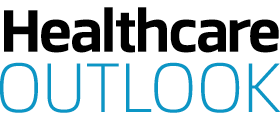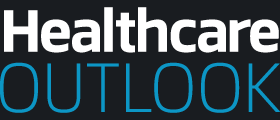We take a deep dive into the Kenya Healthcare Federation (KHF) and explore the need for greater collaboration between public and private healthcare providers in Kenya’s healthcare system.
SPOTLIGHT ON KENYAN HEALTHCARE
In Kenya, health care is a country-wide priority.
Since pre-independence, the country’s health situation has been carried on a promising upwards trajectory, with continually declining mortality rates. In spite of this, with 70 percent of Kenya’s population living in rural areas, the country continues to be plagued by high levels of malaria, gastroenteritis, diarrhoea and dysentery, showcasing the familiar continental struggle of providing a clean water supply and combatting the level of mosquitoes. This particularly applies to what are often considered marginalised rural counties, such as West Pokot and Wajir. In these areas, health care provision is reliant on community health volunteers, and rudimentary health facilities that are staffed by nurses equipped with the means to provide basic services such as immunisation.
The country faces an inadequate drug supply, whilst many health centres and dispensaries are lacking in critical facilities, resources and personnel with adequate training.
Nevertheless, these facilities are essential in delivering outpatient treatment, diagnostic services and obstetric care in remote areas.
The system is split between the Public, Private and Faith Based healthcare providers. Public providers supply the majority of the country’s health care, as the 47 individual county governments handle service provision on a local level. Each county is equipped with an individual hospital.
On a countrywide level, the Public Sector is concerned with matters of policy and the country’s National Referral Hospitals, which include Nairobi’s Kenyatta National Hospital and the Moi Referral and Teaching Hospital in Eldoret. Within the country’s public hospitals, healthcare for the majority of services is free, whereas the fees within private facilities can be a significant deterrent for patients seeking care.
It is estimated that approximately 20 percent of Kenyans are covered by health insurance, although this figure varies dependent on region, with a higher number reported in urban areas. For those with national health insurance coverage, in-patient treatment in public hospitals is free. For the uninsured contingent of the population, there is a perceived risk behind accessing healthcare, since this can result in poverty-inducing exorbitant fees.
Overall, there exists a prevailing imbalance between the level of need, and the care that is readily available. This applies on both an economic and a geographical level. Most recently, COVID-19 truly exposed the weaknesses and vulnerabilities of the healthcare system, and the disjuncture that can arise between public and private providers. This lack of resiliency has been tried and tested before, as evidenced by the 2017 national strike of health care workers. Similar to the pandemic, these events triggered nationwide service disruption that highlighted the need for coordination both nationally and locally, and across all systems.
Fortunately, in recent years, the health sector has been steadily ascending in terms of taking political priority, thanks to an increasingly interlinked and collaborative relationship between government and the private sector. This has resulted in an increase in health expenditure within the national budget. In 2021, this figure amounted to Ksh83 billion ($771 million), compared to Ksh73 billion ($678 million) the previous year. The fact that COVID-19 treatment in government hospitals is currently free, is a positive reflection of this improvement.
In a bid to combat these shortcomings, the Government of Kenya (GoK) has also prioritised the accelerated implementation of UHC, with a roadmap in place to lay the foundations of an improved health system at both a community and facility level. Thanks to the invaluable assessments included within this roadmap through the Kenya Harmonised Health Facility Assessment (KHFA), the NoK can easily identify the areas for critical investment. This presents a key step towards securing sustainability across the system, thereby furthering Kenya’s reputation as a globally competitive nation.

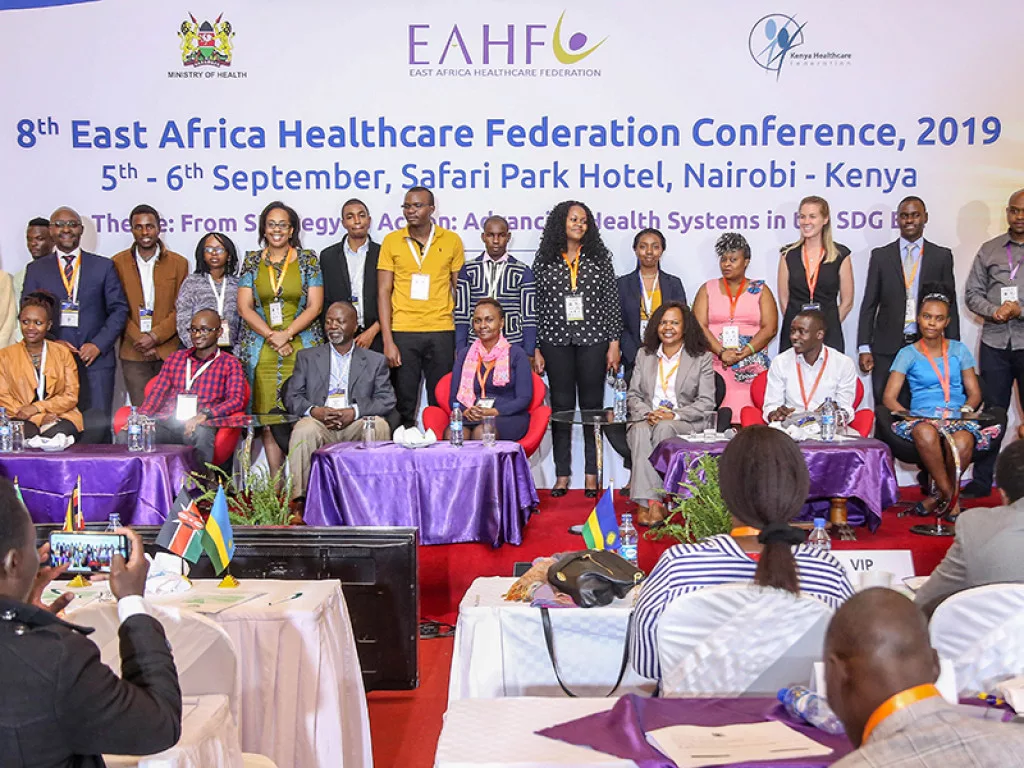
INTERVIEW: KENYA HEALTHCARE FEDERATION (KHF)
As Health Sector Board of the Kenya Private Sector Alliance, (KEPSA) the Kenya Healthcare Federation (KHF) champions access to quality, affordable healthcare for all. CEO, Dr. Anastasia Nyalita, discusses the organisation today.
Since its foundation in 2004, the Kenya Healthcare Federation (KHF) has represented the collective voice of the country’s private healthcare sector. KHF acts as the health sector board for the Kenya Private Sector Alliance (KEPSA). Taking a pro-active role in advocating for the sector’s best interests at a governmental level, KHF champion the altruistic vision of providing quality and affordable healthcare for all – both within Kenya, and across the wider East African community. Indeed, KHF stands as one of the founding members of the East Africa Healthcare Federation (EAHF), founded in 2012 with the mission of engaging private sector health actors across the region.
As a unifying voice pioneering private sector consolidation, KHF is critical in maintaining engagement with both government and stakeholders through Public-Private Partnerships and consistently voicing support and concerns on behalf of their members. By so doing, KHF is well-placed to propose alternative solutions to the major issues confronting Kenya’s health sector.
In the face of the supply chain and health service disruption from the COVID-19 pandemic, KHF continues to lobby for the need to secure a sustainable future by continuing to strengthen an enabling business environment. As a result of this difficult time, KHF implemented a COVID-19 Response Team, designed to coordinate activities amongst private sector stakeholders in health to expedite detection and reduce transmission of the disease through an effective structure. Indeed, these efforts had a tremendous impact on the country’s overall COVID-19 response.
More from Healthcare Outlook
Strategic key partnerships with the National Government of Kenya (GoK), county governments, Faith-Based Organisation (FBO) networks, and NGOs are all instrumental in driving the federation’s goals. Dr. Anastasia Nyalita, CEO of KHF, tells us more.
“Our vision is to champion an enabling environment that supports quality, affordable healthcare for all”
Anastasia Nyalita, CEO, KHF
Can you talk us through the origins of the KHF; how it came about and its initial vision?
Dr. Anastasia Nyalita, CEO (AN): Here in Kenya, the private sector is very well structured to engage with the government.
We have an apex body called the Kenya Private Sector Alliance (KEPSA). Within KEPSA, we have Sector Boards that basically mirror the government agencies. This makes it very easy for the private sector to engage them and other partners in terms of dialogue relating to the private sector. The Kenya Healthcare Federation (KHF) represents the Health Sector Board within KEPSA.
KHF was founded in 2004 and registered in 2008 as a company limited by guarantee. Our foundation was born from the need to have one voice within health to engage the government in dialogue, promote strategic public-private partnerships and champion access to quality healthcare for all. This is our mandate and it is what we continue to do.
In terms of mission, this is to drive strategic public-private partnerships within what we call the public-private dialogue for better healthcare. This involves engaging, representing and networking for win-win negotiations.
Our core values include compassion, inclusivity, capacity building, leadership and innovation. In terms of how we achieve our vision and mission, we do this by initiating programmes and activities that guarantee the sustainability and vitality of the federation.
We were one of the first healthcare federations to be founded in the region with support from the International Finance Corporation (IFC) and World Bank through the Africa Health Initiative. There are seven organisations similar to us within the East African Region, Kenya, Uganda, Tanzania, South Sudan, Ethiopia, Rwanda and Burundi, coming together to form the Healthcare Federation (EAHF), acting on a rotating chairmanship. Critically, this enables us to also shape policy on the regional level.

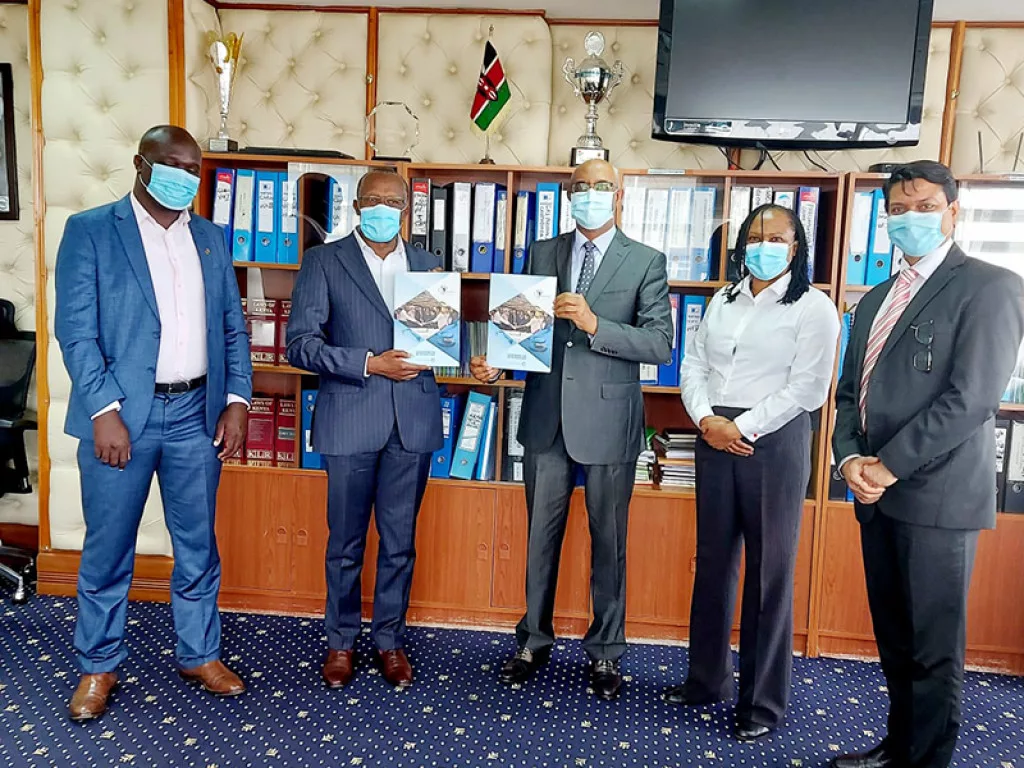
What are KHF’s organisational goals?
AN: KHF’s goals are as follows:
• Initiate activities and programmes that guarantee the sustainability and vitality of the Kenya Healthcare Federation.
• Promote the role of the private sector as a key player in delivery of quality healthcare services in Kenya.
• Engage with various government of Kenya agencies and other policy makers in the development of policies that promote delivery of quality healthcare services in Kenya.
• Build the capacity of members and lobby for action in key thematic areas of health service delivery.
• Facilitate, coordinate and undertake the publication and dissemination of the annual Kenya Health Index.
What do you find most exciting about working within Kenya’s private healthcare sector?
AN: It is our mission of supporting quality and affordable healthcare for all which is achieved through strategic partnerships.
In Kenya, we have what we call the public-private mix, in terms of health service delivery. If you look at our health facilities, the private sector constitutes more than 48 percent of Kenya’s total health service – so it is a key contributor. Alongside this, we have the other players which include the public sector (which is the main one) and faith-based service providers.
Our role is a dynamic one in terms of how we really influence policy’s contribution to quality healthcare through engaging with the various government agencies and other policy makers in their development.
We appreciate the open-door policy that we have with the Ministry of Health. I know that this also applies to other ministries in Kenya, who have very well-established public-private dialogues.
As KHF, we participate in many of the government technical working groups encompassing many areas – ICT, supply chains, Universal Health Coverage (UHC), and within inter-agency coordinating committees.
We hold regular ministerial stakeholder forums presided over by the Cabinet Secretary for Health and co-chaired by chair of KHF to discuss health matters on a quarterly basis, concerning emerging issues and what we propose as the private sector. This also allows us to feedback on what the Ministry are doing. We brainstorm any current issues that are arising, and this creates a very strong collaboration between us and the Ministry of Health.
At KHF and through KEPSA, we have the one platform through which the government can effectively engage with the private sector.
As KHF, we are driving an agenda that will ensure that beyond COVID-19, we are self-sustaining from a supply chain and service delivery perspective on a similar level to India and Bangladesh. Of course, this is aspirational. I believe that this is truly a value proposition for both the country and our members.
“The primary benefits for our members fall into six main categories; advocacy, projects, partnerships and engagements, networking, regional integration, and access to patent events, trade missions and expos throughout the year”
Anastasia Nyalita, CEO, KHF
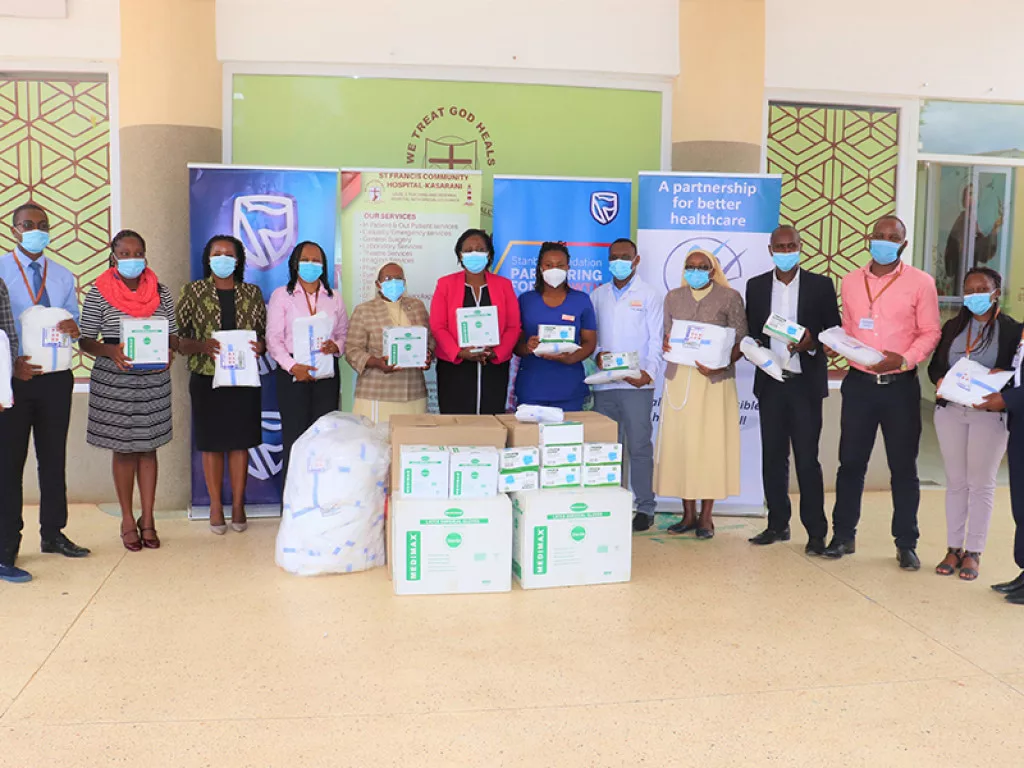
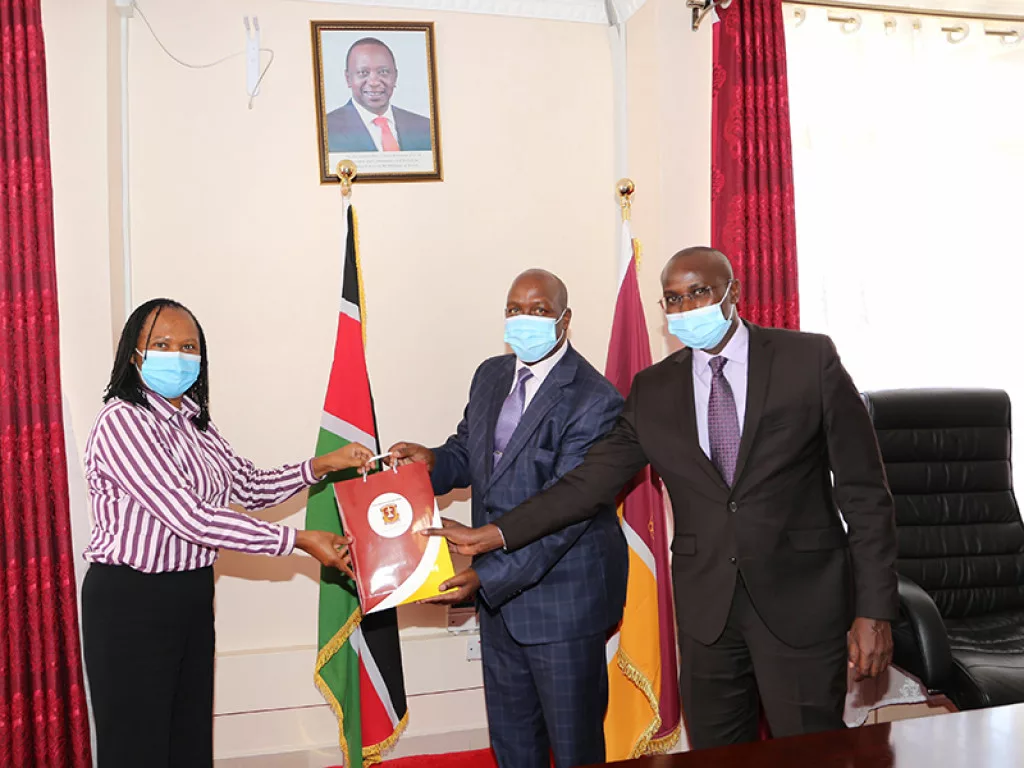
On the flip side, what are its biggest challenges?
AN: One of the things that healthcare players and providers are struggling with is efficiency and healthcare financing. This is particularly difficult for private sector bodies to source financing.
Another key thing that we are working on tackles the large amount of fragmentation that exists around the private sector in terms of the supply chain and service delivery. This has particularly become a major issue due to the disruption caused by COVID-19, which means that most countries are now looking inwards.
Have you got any ongoing projects in the pipeline you wish to highlight?
AN: In the discharge of its mandate, KHF conducts different projects with partners. We give our members priority to participate in projects such as Afya Elimu Fund, multi stakeholder partnership and other national, regional and global projects.
Another key thing that KHF do concerns capacity building within the key thematic areas of health.
We are currently working on a Payer-Provider Engagement initiative, in collaboration with World Health Organisation (WHO). The Ministry of Health is supporting this, as is ThinkWell and the Strategic Purchasing Africa Resource Centre (SPARC), basically to encourage the two sides of care providers to speak with each other and identify the themes that they are struggling with and their aspirations in terms of what they want to see from a policy and capacity building perspective.
We know for example that the payers have an advantage when it comes to healthcare financing and understanding compared to the providers – so we will try and address the matter of how do we provide a solution to address this gap. As an outcome of the Payer-Provider Engagement initiative is draw up an issue paper where there will be actions, policy aspirations, and so on in terms of the key thematic areas.
Aside from the Board, KHF also has the secretariat, which I lead, alongside our technical working groups/committee and our members can participate based on their technical expertise and individual areas of interest. These are aligned with the building blocks of health systems as specified by WHO, which include Health Regulations, Quality and Standards, Healthcare Financing, Human Resources for Health, Supply Chain, ICT/Mobile Health and Public Private Partnerships.


Tell us more about being a member of KHF?
AN: Our members see the benefit of belonging to KHF because we are entirely a membership-based organisation. We promote the role of the private sector as a key player in the delivery of quality healthcare services in Kenya. The primary benefits for our members fall into six main categories; advocacy, projects, partnerships and engagements, networking, regional integration, and access to patented events, trade missions and expos throughout the year.
As such, the unique benefit provided to our members is primarily advocacy since we act as the sole collective voice of the private sector. We voice our member’s issues at the technical working groups at a committee level, where they can deliberate difficulties that are then taken up by the board and presented either to the Ministry of Health, or through its agencies. When necessary, this can then be presented at even a parliamentary or presidential level through KEPSA.
In terms of who is included within our membership, this extends to all the sub-sectors. We have a total of over 160 members – on our database we have close to 200 but in terms of our most active, they number approximately 160.
This includes institutional organisations, such as cooperates, NGOs, and commercial and social enterprises. They form the majority of our membership, and they come from within healthcare, financing, supply chain, service delivery, human resources for health, advisory, governors, and health technology organisations as well.
Then we also represent professional associations – healthcare professionals. We don’t have individual members; they are all either organisational or institutional associations.
Finally, we have Trade Associations / Institutional Associations, such as hospital associations, local manufacturers, medical insurance providers etc.
As you can see, we represent everybody across the board.
Overall, we also benefit from the stronger voice that KEPSA has in advocating for the wider issues. We foster engagement and host regular events to encourage dialogue from all the players in the health sector.
